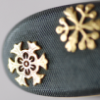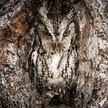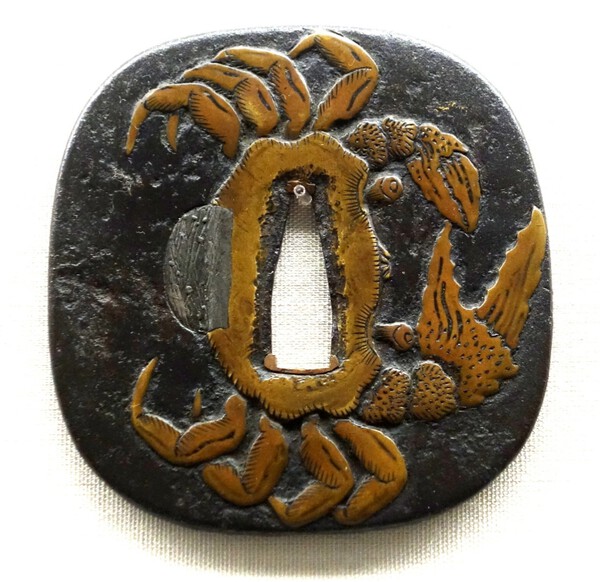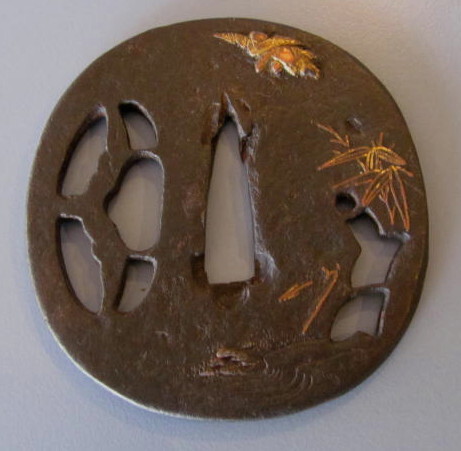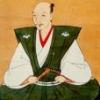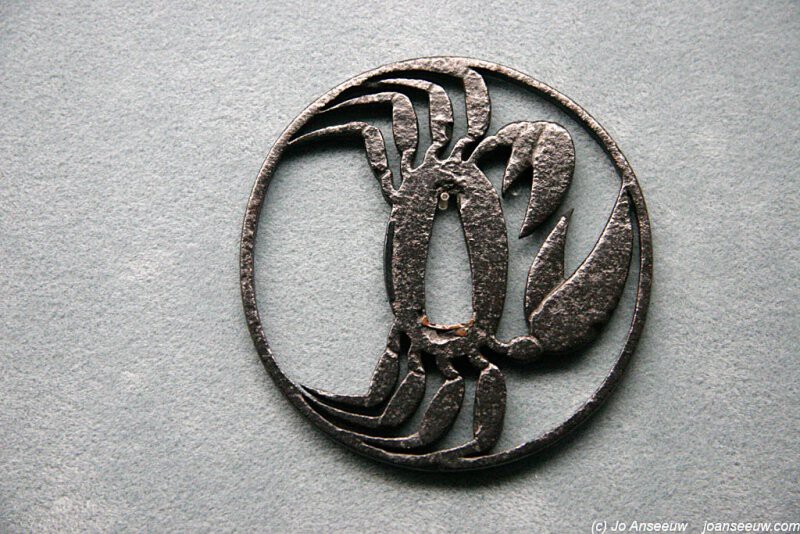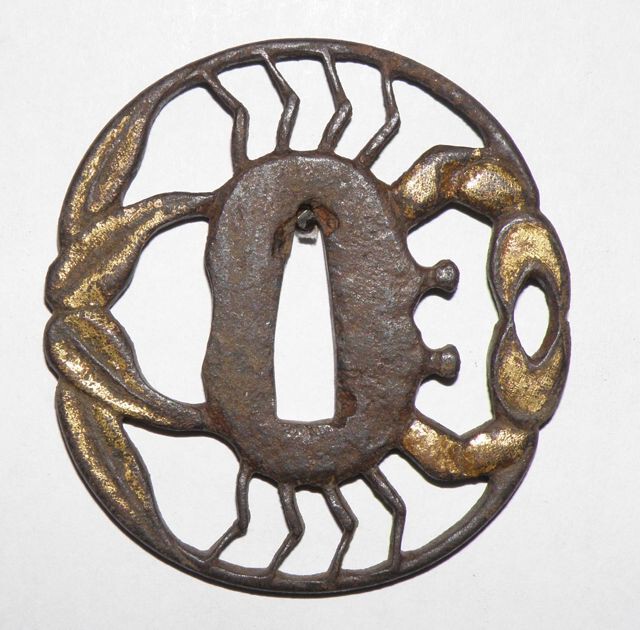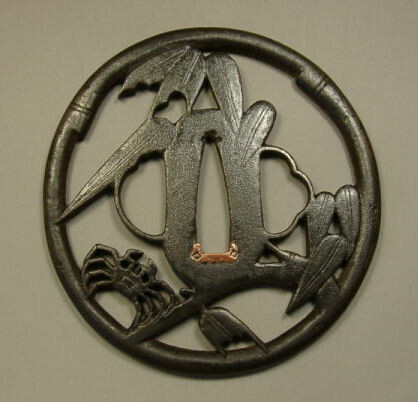Leaderboard
Popular Content
Showing content with the highest reputation on 10/04/2021 in all areas
-
Hi all, It is wisely said on this forum that one should not invest time and money into building koshirae for every blade in shirasaya that falls in ones lap, for many good reasons. However to my defense the blade came with a good tsunagi when I bought it from a forum member here, this pandemic has ruined enough of my fun lately as it is, and dammit its my money to squander from the rooftops! I put together a set of antique fittings that fit the blade's proportions and had a new saya, tsuka, ito and same done profesionally. I'll post better photos when I have it in hand, still waiting for sageo and origami before its shipped to me. This is my first time composing a koshirae, hopefully my greenhorn tastes are not too much of an eyesore6 points
-
Things to look at, in no particular order, would include: blade shape - is the blade straight or does it have a bend? kizu -are there any flaws and or chips in the blade, hada - consistency, tightness, delaminations, hamon - consistency, hataraki, nakago - patina, file marks, mei, ana (number type), habaki - fit, quality of materials used e.g. gold vs copper shirasaya - fit, condition, stains, dents tsunagi - does it fit both the shirasaya and the koshirae.? Is is damaged in any way, if there is a wood habaki - has that been damaged. koshirae - quality of individual pieces, signatures - gimei? theme of pieces - do they work well together, fit of pieces to the blade - tsuka, fuchi kashira correct size? seppa, tsuba, kozuka, kogai do they work well with the tsuba?, Does the koshirae add to the blade or are they poor quality or so good that they are a distraction. Finally, how does the whole make you feel. I have picked up some swords that made my hands sweat, that made me feel awe, that made a connection to me in some personal way. I do believe that the sword finds the man/woman. In some cases, the feeling was almost immediate. My mentor once told me: "You only regret the one you didn't buy." If you have done your due diligence, and the blade "speaks to you" make the purchase happen.3 points
-
Pippo , even if you bought this off a man who bought it back from the islands ( thus knowing it was around in 1945 ) you still have no real way of knowing if it was A) A piece made by the Japanese whilst stationed in the SW Pacific. B ) Something made locally for collaborating local forces C) A " jeep spring " made by Australian or other allies with the intention of selling it to a sucker as the real thing. I have had a number of similar dogs over the years but you just can't tell into which category they fit . The workmanship is so poor that you would assume B) or C) Ian Brooks3 points
-
This is an old (about 30 years ago) and rather long video. You can see the carving procedures and the blade conditions.3 points
-
Hello Jon, The NBTHK aren't attributing it to Yoshimasa. Yoshimasa is the name already on the sword. The NBTHK is attributing this smith/sword to the Senjūin group based on the attributes of the sword. Another way of reading the certificate is: "Great looking Senjūin sword. Never heard of this Yoshimasa guy, but by all the evidence in the sword in front of us, he was for sure a Senjūin smith". Does that make sense?2 points
-
Nick, Your question is much like the one asked of an older lady on the streets of New York by a young man with a violin case under his arm, "How do I get to Carnegie Hall." Her answer, "Study." What Barry wrote makes sense but there is so much more to it. Study. Grey2 points
-
I appreciate the effort. I find these items interesting as well. There is a larger thread about these, if I get a chance I will link it here. Nick Komiya, Warrelics, Posted a translation of a document in the last year of the war which showed that Allied bombing had essentially destroyed sword making on the mainland in that final year. They change the military specifications orders to allow anything that “shoots for stabs” to be produced regardless of Quality. He also showed a navy regulation downgrading the requirements for the metal fittings to allow one belt hanger black and fittings and essentially lower quality everything.2 points
-
2 points
-
Thanks gents, it was more of a forum discussion piece as i know very little of these pieces that do turn up but find it of interest as the empire ran low on resources and thought it might be an area that had been explored. Sure we all remember that it wasn't that long ago that having type 95s ( yes i know they were a authorised pattern but have had wooden hatched patterns with awful Aweful blades) were also considered dogs, i certainly had alot of harsh comments on why waste $100-$200 on machine made blades when i caught that bug and that turned out pretty well.2 points
-
The issue is they are so crude very few people are going to bother taking the time to investigate if these are original. The sword in the bottom photo is genuine and worth a closer look. The wakizashi is pretty hard to pin down, without being able to see the Nakago it's pretty hard to tell if genuine, island or chinese.2 points
-
Ford - you just can't trust anything at face value. I made a Ko-sukashi back in the 80s from a suitably thin plate of steel, cut the pattern out by hand [I had more patience then] took a lump hammer and beat it on some flaky sandstone to get a good texture. Left it in the garden for a week, washed and patinated it and was offered $450 for it [not a lot of money now but that was a weeks wages in the 80s] I didn't sell it, eventually gave it away to someone else years later. Bob. These off the shelf antiques turn up day after day - and no shortage of buyers! https://www.jauce.com/user/dj2hmyuc I wonder if they are made from old 44 gallon drums?2 points
-
I got an offer to buy a great koto blade so I have to say goodbye to the best piece in my collection Tsuda Echizen-no-kami SUKEHIRO 津田越前守助広. He was born in Kanei 14 (1637), Uchide town, Settsu domain, real name Jin'nosuke 甚之丞. He learned from the 1st gen. Soboro SUKEHIRO そぼろ助廣 to realize his ambition to be a swordsmith to obtain Echizen-no-kami 越前守 title in Meireki 3 (1657). He achieved success and won fame and in Kanbun 7 (1667), Aoyama Inabanokami Munetoshi 青山因幡守宗俊 (Karo top-ranking samurai officials) of Osaka castle employed him as a retainer with a 10 fuchi salary. At the age of 31st to 38th years old - from the eighth month of Kanbun seven (1667) onwards - he executed the dated signature of the ura side in grass script and applied a keshō to his yasurime and after 38 years old - from the second month of Enpō two (延宝, 1674), he executed the signatures of both sides in grass script His general workmanship transformed from Choji-midare of smaller clove in his early years then roundish gunome or gentle wave Suguha and surging waves of Toran-ba in his later age. He was a dominant smith in his time, has been highly prized as the most superior swordsmith to have a great impact on all swordsmiths in later ages. Died young in Ten'na 2 (1682), was 46 years old. The exceptional position of this swordsmith sufficiently confirms its ranking Fujishiro: Sai-jo saku Hawley: 100 Toko Taikan: 25 mil Yen Yamada Asaemon, who was the official sword cutting ability examiner and executioner of the Tokugawa shogunate, published a book "Kaiho Kenjaku" (懐宝剣尺) in 1797 in which he ranked the cutting ability of swords. The book lists 228 swordsmiths, whose forged swords are called "Wazamono" (業物) Tsuda Echizen Sukehiro received the second highest award Ó-wazamono (excellent) which only confirms his exceptional skills This sword is in the unique style of Naginata-naoshi Katana Despite much effort, I was unable to find a second blade from Sukehiro 2nd in this unique style Wide and thick, impressive shape from which radiates strength and respect Mei: Echizen no Kami Sukehiro Nagasa: 74.5 cm Sori: 1.8 cm Motohaba: 3.2 cm Sakihaba: 2.1 cm Kissaki: 3,3 cm Motokasane: 7.5 mm Nakago: Ubu, 2 mekugi-ana, zaimei Habaki: single silver with high quality shirasaya NBTHK: Tokubetsu Hozon Kitae is well grained ko-itame with ji-nie. Beautiful texture representing Osaka jigane Hamon is nie deki gunome midare toranba style continue from the hamachi to the Kissaki area The nakago bears the five character signature of Echizen no Kami Sukehiro, which was in use around Kanbun 6 ( 1666 ), the last year before taking up work at the Osaka castle. This sword is one of the first Works that he made in establishing his Toranba style and together with the unique shape represents an exceptional opportunity to own a blade from one of the best Shinto swordsmiths 32.000 EUR + PP fee or SEPA payment incl. shipping cost within EU Photos at Hi-Res are available here https://www.zonerama.com/Nihonto/Album/62688251 point
-
For those reading this section of the NMB, please note I have listed ( for sale or trade section ) some fine SAGEMOTO already and will be listing other works including Kiseru, Boys Festival Dolls, Tetsubin ( Tea Ceremony ), Gunsen ( war fan ), Singing Bell, Japanese Coal Oil Lamp ( beautiful ), Vesta Boxes, and Netsuke. ALL ARE TOP QUALITY and priced at a fraction of their market value. Please check the For Sale or Trade Section of the NMB regularly over the next few weeks. Thank you, ... Ron Watson1 point
-
And we saw a Zoheito blade, albeit in nice Type 98 mounts, sell for around $2000.00 on an auction side recently. It was discussed on a thread on this board about a month ago, if my memory is correct. Apparently, some find value in these examples.1 point
-
I did not check any references myself, but with Senjuin unknown signatures are quite common. They did not have Edo period's genealogies to back them up, being an outsider group in a sense, while at the same time they are really old, with late Heian swords found here and there. So what would be a slam dank TJ with Bizen or Yamashiro becomes just a guaranteed TH with Senjuin, with not a lot of extra money from the fact that its signed. Funny how a low grade ko Hoki will set you back easily 3 mil yen, while very good Senjuin can be had for under 2.1 point
-
Welcome Quinn! If you read the nihonto section of this website you will soon see where you can post photos, descriptions and questions about your sword.1 point
-
G'day Guys, I have a database of 53 of his long blades that I have found on the net. His most common hada is ayasugi, followed by masame, followed by soshu in the ratio of 4:2:1. Then there is the odd example of other styles such as koitame. Cheers, Bryce1 point
-
The Japanese tell us to study the best examples possible for good reason. One reason is that the student of nihonto will not begin to realize what is possible until they are able to see it ( nie, nioi, ashi, utsuri, yubashiri, chikei, ji-nie, sunagashi, hakikake, mokume, itame, masame, etc, etc, etc ... ), and more importantly understand the quality of what it is that they're seeing, as well as realize what they're not seeing. This requires studying numerous examples of nihonto, many, many, including those by the same sword smith side by side (if possible), along with those of smiths from all different levels. Another critical factor that cannot be overstated when trying to determine the quality of a sword is understanding (recognizing) the quality of the polish. A polish is NOT just a polish.1 point
-
It starts at post #17 on this page: https://www.warrelics.eu/forum/Japanese-militaria/nlf-gunto-discussion-672281-2/#post20305341 point
-
Hello George, It was somewhat a baptism of fire. Because of the pandemic I've been stuck in Norway with the majority of my collection left overseas in Miami for around two years now. Fortunately I measured the nakago and the antique habaki in the past, so with those numbers available I knew what tsuba, fuchi and kashira were possible good fits proportionally, which I gave more importance then visuals to avoid having to alter any of the pieces. Although I managed to maintain a fellow theme with small ume flowers throughout the fittings despite my minion shipping the wrong set of menuki. I had family in Miami measure and ship the fittings, the blade was already in place since Moses Becerra of nihontoantiques.com who did the work had it with him from assisting with shinsa earlier. The most enjoyable part of the process was definitively seeing how it all came together and that it exceeded my expectations since I have in fact not seen all the pieces together before. The tsuba I have never had in hand, I acquired it specifically for this project since it was confirmed by the seller in Japan by photos to match the nakago on my blade remarkably well. Kudos to Buyee for making such interactions easy. Also planning and picking out the antique fittings was a great deal of fun and learning. My first set of fuchikashira had to take a back seat, you actually require kashira with shitodome when mounting as I realized just before shipping. I wanted it all to be antique materials save the new woodwork, ito, seppa and same. By far the worst part was shipping items around during a global pandemic, I'm sure I am not the only one with experience what this global mess did and still do to any shipping further then ten feet. Moses has kept apologizing to me for the time this has taken, but considering work like this takes time and a nice slap of pandemic on top does not speed things up the wait for his work and supplies from Japan has been expected and quite manageable. The work done was new saya, tsuka, same, ito wrap and sageo. I already had a tsunagi and the original habaki so did not need that full package of work done. The total cost for me will likely end up north of ~$1800, party because of DHL who is the only comfortable shipping option to me now is currently having a laugh with exorbitant covid prices in the hundreds of dollars.1 point
-
1 point
-
Thank you Shugyosha. I'll protect the tang while trying some WD40. I'll post back once done.1 point
-
It looks slightly deformed anyway. Try something like WD40 or 3 in 1 oil under the habaki. That might help to lubricate it and will ease it if there is any corrosion underneath. Go easy with the quantity and keep it off the tang. Don’t clean the tang.1 point
-
Can you slide the metal collar (habaki) off? That should help too. Gut feeling is that the blade is an older, possibly Muromachi era blade. But I would wait to hear from more experienced members here.1 point
-
You have what appears to be an older, traditionally made wakizashi. A wakizashi is a blade that is shorter than 24" but longer than 12". However, for more to be gleaned, we would need some close up shots of the activity in the metal. Specifically, closeups of the kissaki (pointy end), the nakago (the part that goes into the handle), and shots of the hamon/side of the blade that shows details in the metal.1 point
-
1 point
-
1 point
-
Björn, the 'replacement' doesn't look like silver. It could even be glue or lead or whatever. But you have it in hand and will know better. Often, metal parts were traditionally glued in with URUSHI (lacquer), but a modern material like two components glue will certainly work as well. Ford will tell you what is best.1 point
-
John, I believe they are often called chikei, but are the result of folding various sorts of steel. Real chikei are arrays of ji-nie and are a hallmark of quality. I guess, this is a question of nomenclature. However, when we call something chikei, we should not refer to what is an aspect of hada. For how should we then call those formations of ji-nie?1 point
-
I'd go with Ford's F&K - I was looking around for a simple Higo style set for you but didn't come up with anything.1 point
-
Think its worth knowing if these pieces are ww2 or not whether we purchase or just increase our knowledge. Calling what could be the last ditch efforts of an empire dross ? What i was looking for was a serious opinion of whether these were ww2 Japanese military or not, historically still fits into this forum about Japanese military blades or just some island copy. If anyone actually knows itd be appreciated.1 point
-
Not give give anyone pointers on faking great age on a tosho tsuba but the most efficient way is to start with already severely corroded 2 or 3mm mild steel plate. This sort of material is readily available from scrap yards or in old abandoned farm buildings and doesn't really take many years of exposure to the elements to create. The 'appearance of age' is a great deceiver. Strip all the rust off in a dilute bath of hydrochloric acid, cut out your patterns and with the judicial use of a jeweller pendant-drill hand piece or dremmel tool and suitable ball burs the freshly cut edges can be quite quickly and effectively shaped to simulated the corrosion pattern of the rest of the plate. And finish by applying a new patina. I actually made two this way in a day many years ago when living on a farm in Cornwall. I added sekigane, beat them about a bit and left them in a stone wall for a year. Then I recovered them and 'restored' them. They fooled two prominent London dealers at the time, when friend of mine presented them for appraisal. My point is, it's really not difficult or time consuming to create this sort of object, and in some parts of the world even $50 a week might keep a family fed. So it's absolutely worth doing if the internet makes their sale a possibility. Obviously the papered Higo fakes I make are more time consuming and require a bit more expertise but I manage to get really good money for them....so Maybe I should diversify and do Umetada now, probably better money.1 point
-
As I learned in my high school Latin class; "de gustibus non est disputandum", which roughly means "of taste it is not to be disputed". As to the tsuba put up by the OP, I would call them "gaudy". There is an interesting discussion of the derivation of this word. It is not derived from Antoni Gaudi, the famous Catalan artist that helped to make Barcelona the beautiful city it is. i found this little blurb about the word. http://blog.barcelonaguidebureau.com/wp-content/uploads/2014/04/GaudyIceBar.jpg Gaudy: tastelessly ornate or showy As you say, it is “hard to believe.” Probably what you really mean, of course, is “Get that ridiculous story away from me before I call the cops.” Nobody minds a little creative conjecture every so often, but trying to trace a word such as “gaudy,” which has been in common usage since the 16th century; to a 20th century architect whose name just happens to sound like “gaudy” is a bit much. http://blog.barcelonaguidebureau.com/wp-content/uploads/2014/04/Gaud%C3%AD_1878.jpg Antoni Gaudí (1878) That’s not to say that there hasn’t been a bit of a debate about the origin of “gaudy,” meaning “tastelessly ornate or showy.” One theory traces “gaudy” to an old Middle English term, “gaudy-green,” which was evidently a sort of bright yellowish-green. Gaudy-green dye was made from the weld plant (Reseda luteola, for you botanists out there), whose name in Old French was “gaude,” so that’s where “gaudy-green” got its name, anyway. But most etymologists doubt that “gaudy-green” was the root of our more generally tasteless, Elvis sort of “gaudy.” A more likely source is the obsolete English word “gaud,” meaning “joke, toy, or showy ornament.” This “gaud” came from the French “gaudir,” meaning “to rejoice or jest,” which came in turn from the Latin “gaudere,” meaning “to rejoice or delight in.” (That Latin “gaudere,” by the way, is also the source of the English word “joy.”) I think that the “joke, toy, or showy ornament” definition fits the description of these items.1 point
-
This sort of stuff is really the dregs of what could be barely considered Gunto. Best to save your money unless these island/late war/desperation pieces are your collecting niche.1 point
-
1 point
-
I am quite delighted that the Museum will exhibit around 25 items from my personal collection. I look forward to seeing the Video when it becomes available. Congratulations Dr. McNicholas and I'm quite sure the Samurai Museum in Lynchburg will please and educate many visitors on the Arts of Japan & The Samurai !1 point
-
This sword is in the Fitzwilliam Museum in Cambridge England. Sadly the museum staff knew nothing about it and claimed it was a low quality mass produced piece. I rather doubt that as it looks to be in fairly high quality koshirae with a well executed bohi and complex hamon. Perhaps I am showing my ignorance and I would welcome any comments.1 point
-
All, On my last trip to Japan I attended the Bizen exhibit as well as visited several temples with swords on display. It was my observation that there did not appear to be any oil on these swords. In talking to a woman at one temple, that houses one of Oda N's sword, she mentioned they haven't moved or touched it in years. It appeared in good polish. It was in a rather ordinary display. I could not identify anything that appeared to control the climate either. How is this possible? What the heck are they using to do this? My motives in trying to determine this is that my collection will be placed on temporary display at a university in a similar fashion. Thanks in advance for your thoughts on this matter. Best, James1 point
-
Dear Bjorn, very nice tsuba - I really like it. I believe that most good koshirae were tied together in a meaningful theme that was important to the owner. If the sword is the “soul” of the Samurai and the single most important item to him, why would he just put together a bunch of random tosogu on his sword? I think that your tsuba is a stylized chrysanthemum which symbolizes Autumn, Purity, Longevity and Nobility, and is featured in many different legends and motifs like “the Chrysanthemum Boy,” "the Four Gentlemen," “Master of the Five Willows”, etc. So in addition to choosing other tosogu to go with your tsuba’s color and “solemn” style, you might want to choose a matching theme that is important to you too. For example, if you like the Four Gentlemen, then you would want to find tosogu that match your tsuba in color and style that have the other three flowers/plants of this grouping. Remember that the Japanese view of flowers was very different from most Western perspectives. The Four Gentlemen (Shikunshi) was a well known theme to Samurai that was adopted from Chinese philosophy and consisted of orchid, bamboo, chrysanthemum and plum. The traits represented by these plants exemplified Bushido (the Warrior’s Way).1 point
-
I am definitely the last person to be relied upon for proper understanding of the terminology and rules, but: the blade is Ayanokoji, Kamakura. In most tables this is dozen to things like Munechika and maybe something like Rai Kuniyuki. With Enju I had to look up the tables, and (I hope I got this one correctly) some books like Conneusiers... placed Enju as tori yoku for Ayanakoji. Rai would be dozen for Enju.1 point
-
With a different, i.e. Kamakura shape here. Hoping not to sound too professorial, but that's what the earliest pieces look like - Yamato, Soshu, Bizen (ko choji) all in one piece.1 point
-
Item No. 64 Large Iron Tsuba with Gold 8.47 cm x 7.86 cm x 0.50 cm Subject of Sukashi Dragons in a field of gold key pattern inlay , unsigned. The inlay continues around the mimi , dragons' eyes are gold . Unknown age or school , described by Auction House as dating to approx 1780 , ie 240 years old... Bought a few years ago at a European Auction.1 point
-
Shipping via UPS Worldwide Expedited is included in the price, unless otherwise stated, which is usually in parenthesis next to the price, if so, along with any additional payment fees. (Usually only applicable on very high dollar items.) They will confirm your order via email, and send you an invoice for the amount, which you can pay via credit/debit card without any additional fees. I can't speak to the process with wire transfers or other payment options. In my experience they get the export license at 3 weeks, pretty much on the nose, and ship within 2-3 business days from that time. You will need to provide a tax ID # (I use my social) to UPS Brokerage/International. Keep an eye on the tracking and call them when the status shows that an ID number is required for clearance. After that information has been forwarded, and the package has cleared, you will need to pay any customs/import/UPS brokerage fees. There will be a link in the tracking status result saying COD import fees or some such thing are required. You can click the hyperlink and pay with a credit card, or pay the driver directly when it gets delivered to you. (I've read paying it immediately online speeds up the process.) For antique swords (over 100 years old and around the $4000 range) I've always paid close to $40 dollars total for the brokerage/import fees. For a modern sword (1972, around $4300) I paid almost $160 total, as there is a tariff/tax applied to 'new'/non-antique products, contingent on stated/invoice value.1 point
-
1 point
-
Thanks for the info Stephen. It is the first faked star stamp i see. Btw. Artem. Your website looks very nice.1 point
-
1 point
-
1 point
-
Interesting tsubs, Mariusz. I don't think I've seen one quite like this before. I wouldn't be able to locate this piece with confidence in a particular school, but I would agree with Ford: not cast and of the Edo Period (mid-to-late-Edo). Here is an image of the iconic Owari crab tsuba from the Tokyo National Museum. Obviously very different from yours there, but since you asked for crab tsuba... Cheers, Steve1 point
-
Thank you Moriyama-san :-) A lovely Higo tsuba. I love this cute little crab :-) Here is the picture of the kani tsuba in question. Not a great piece, it looks like cast iron to me However, it is most likely based on an original tsuba, and I would appreciate any information about the original design.1 point
-
1 point























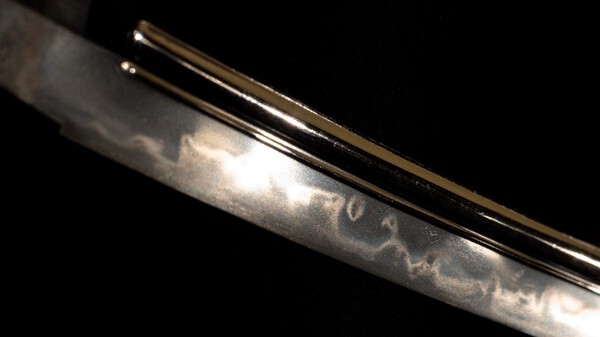


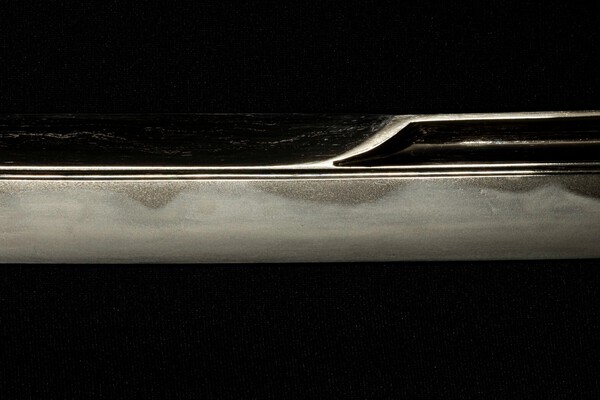


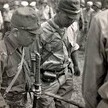

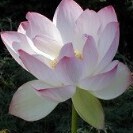



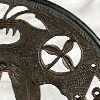
.thumb.jpg.beb35a7fd160723193bc915952a523f6.jpg)
.thumb.jpg.e53f89511a16258875cf4f3f76911bb6.jpg)

